What should you do when your AeroGarden plants get too big for their water-based home? Moving them into soil is a key step for their continued growth and health.
Let’s look at the whys and hows of shifting AeroGarden plants to soil. When done correctly, transplanting is a move that can help them thrive in a new outdoor setting. I’ll cover the reasons for this change and share practical advice to make sure the transition is smooth and successful.
Let’s explore how to do it right and give your green friends the best chance to flourish in their new environment.
- Related article: Explore the Best AeroGarden Model
6 Key Takeaways on Transplanting AeroGarden Plants to Soil
- Transplanting AeroGarden plants into soil can give them a more natural environment, which helps them grow larger and stronger.
- Soil provides more room for plants to expand their roots, which is especially important for larger plants that might struggle in the compact AeroGarden.
- Soil can help avoid common AeroGarden issues like algae buildup, making maintenance simpler and less frequent.
- Trim AeroGarden plant roots before moving them to the soil and wait until they have their first true leaves for a smoother transition.
- Use a pot that is deep enough and has good drainage to support the plant’s root growth and prevent root rot.
- Place newly transplanted plants in bright, indirect light and keep the soil consistently moist. Gradually introduce them to outdoor conditions if they will be moved outside.
Why Should AeroGarden Plants Be Transplanted?
Shifting from the AeroGarden to soil can offer your plants a more natural environment to thrive in. Let’s dive into the reasons behind this move.
Transplanting Improves Seed Starting Efficiency and Speed
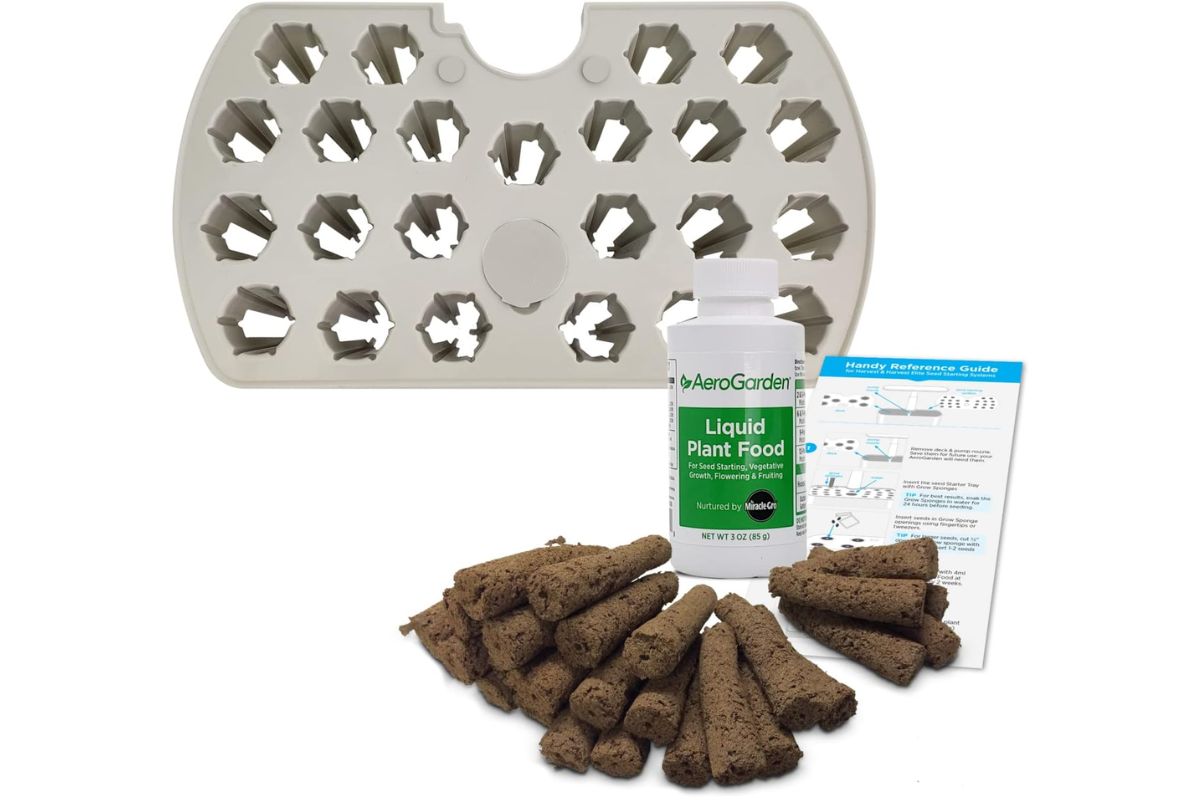
Transplanting AeroGarden plants to soil is a great way to expand your garden. The AeroGarden is super effective for starting seeds, way better than using just paper towels and water. It helps seeds sprout faster and stronger.
When you use the AeroGarden to start your seeds, you get a head start on the growing season. This means you can grow plants even when it’s cold outside and you don’t need direct sunlight or a traditional garden.
Depending on your AeroGarden model, you can purchase a Seed Starting System that lets you grow a lot of seedlings at once, up to 50! Once they grow a bit, you can move them to pots with soil or plant them in your garden.
The system includes a few key items to get you started:
- A durable plastic seedling tray that you can use multiple times
- Biodegradable Grow Sponges that come ready for planting
- Plant food to keep your plants healthy.
- A guide for starting seeds and transplanting (seeds not included).
These components are designed to make the transplant process as smooth as possible. When you’re ready to move your AeroGarden plants to soil, having these items on hand will be a big help.
Transplanting Prevents Crowding From Too Many Plants
Growing big plants like beefsteak tomatoes in an AeroGarden is a bit of a challenge. Big plants need more room. If you plant all your pods close together, the plants fight for light, water, and food. This fighting can hinder successful planting. So although the AeroGarden Farm can offer more space, some people might prefer a larger garden outdoors.
By moving plants outside, you will give them enough room to grow and they won’t struggle for resources. Outside, you can choose an appropriate area for your garden bed where your plants can continue to flourish.
Transplanting Reduces Time Needed to Clean Your AeroGarden
Forgetting to change the water in your AeroGarden can lead to a messy situation. And you’ll have your work cut out for you when dealing with algae.
Algae growth is a common issue when water isn’t refreshed regularly. This is particularly common when the AeroGarden is placed near sunny windows. Dealing with algae means extra cleaning work to keep your plants healthy. It’s important to know the right way to clean your AeroGarden to avoid problems like algae.
During a cleanup, you might consider moving your AeroGarden plants to soil. This switch requires special attention to the root ball to ensure your plants survive the move. Skipping this step will leave you with lifeless, bare plants.
What Things Should You Keep In Mind When Transplanting?
When you’re moving AeroGarden plants to soil, it’s a big change for them. They’re used to growing in water, so this move needs to be done carefully to keep the plants healthy.
Here are some things to keep in mind when transplanting:
- Prepare for the Move – AeroGarden plants have roots that are used to water. These roots are not as strong as the ones in soil. Trim your AeroGarden plant roots a bit before moving them. This helps in root growth once moved.
- Wait for the Right Time – Only move the plant when it has its first set of true leaves. This is a good indication that it’s already quite established.
- Give Your Plants Time – After pod transplants, let the plants sit for about three days. This is an effective method that helps them get used to the new soil. Then, you can start watering them regularly.
- Find a Shady Spot – Keep the seedlings inside until the weather is warm enough. Once the sun is out, you can move them to a shady location outdoors.
Moving AeroGarden plants to soil is a big change for them. But if you do it right, they’ll grow well in their new home.
How Do You Transplant AeroGarden Plants?
Transferring AeroGarden plants to soil can be a positive step in their growth. With the right guidance, this process becomes simple and avoids transplant shock. After all, some plants simply do better in a traditional soil environment. With a bit of care and the right technique, your plants can make the transition successfully.
Listed below are the steps to transplanting AergoGarden plants correctly.
Step 1 – Select Your Pot Size
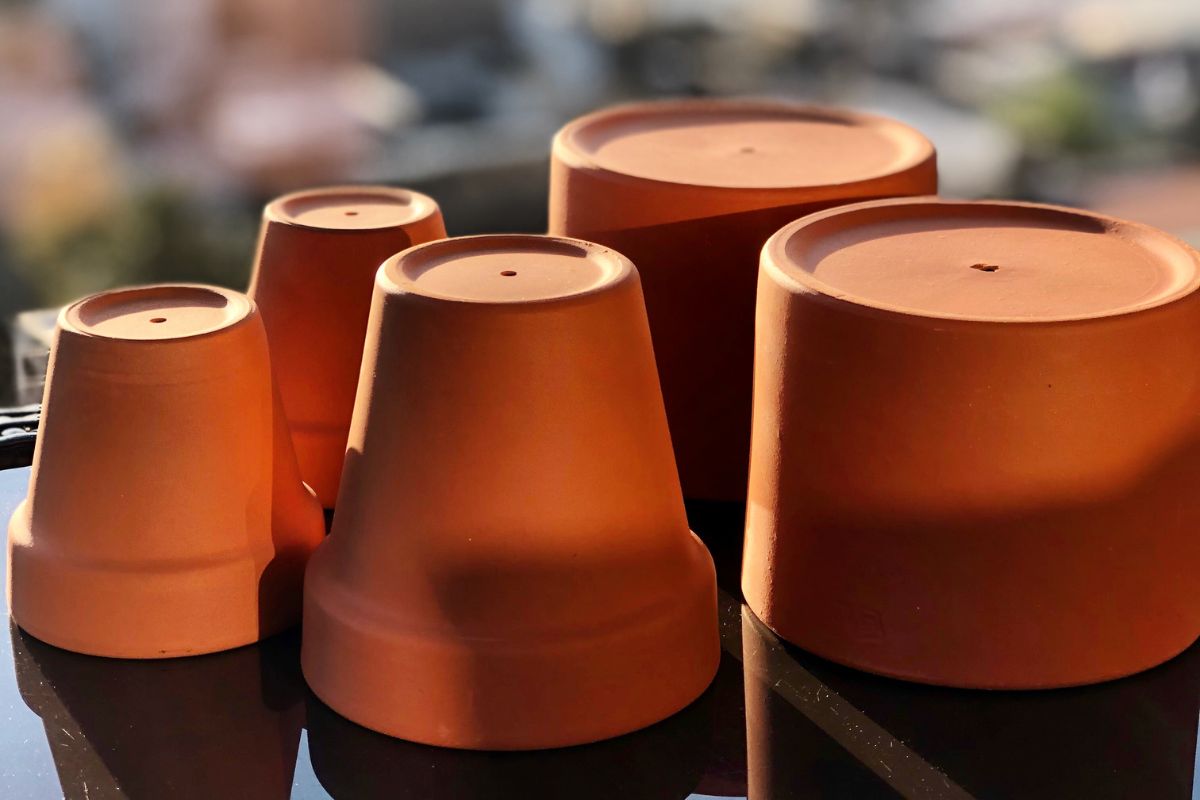
When moving your AeroGarden plants to soil, you need to pick the right spot for them to grow. It’s like finding a new home that fits just right.
Aside from that, consider plant size when choosing pots. If you plan to add more soil, make sure the pot is deep enough too. For pot diameter, aim for about 4 inches. This size lets the plant grow well and avoids root problems. It also helps manage water so there’s no excess that the plant can’t soak up.
Choosing the right pot sets your plant up for success as it makes the move from the AeroGarden to the soil.
You can choose from terracotta, clay, plastic, or ceramic pots for transplanting your AeroGarden plants. Reusing existing plant pots is a great option if you have them at home, but if you need to buy a new one, you can easily find a variety of options online.
Step 2 – Prepare the Plant Container
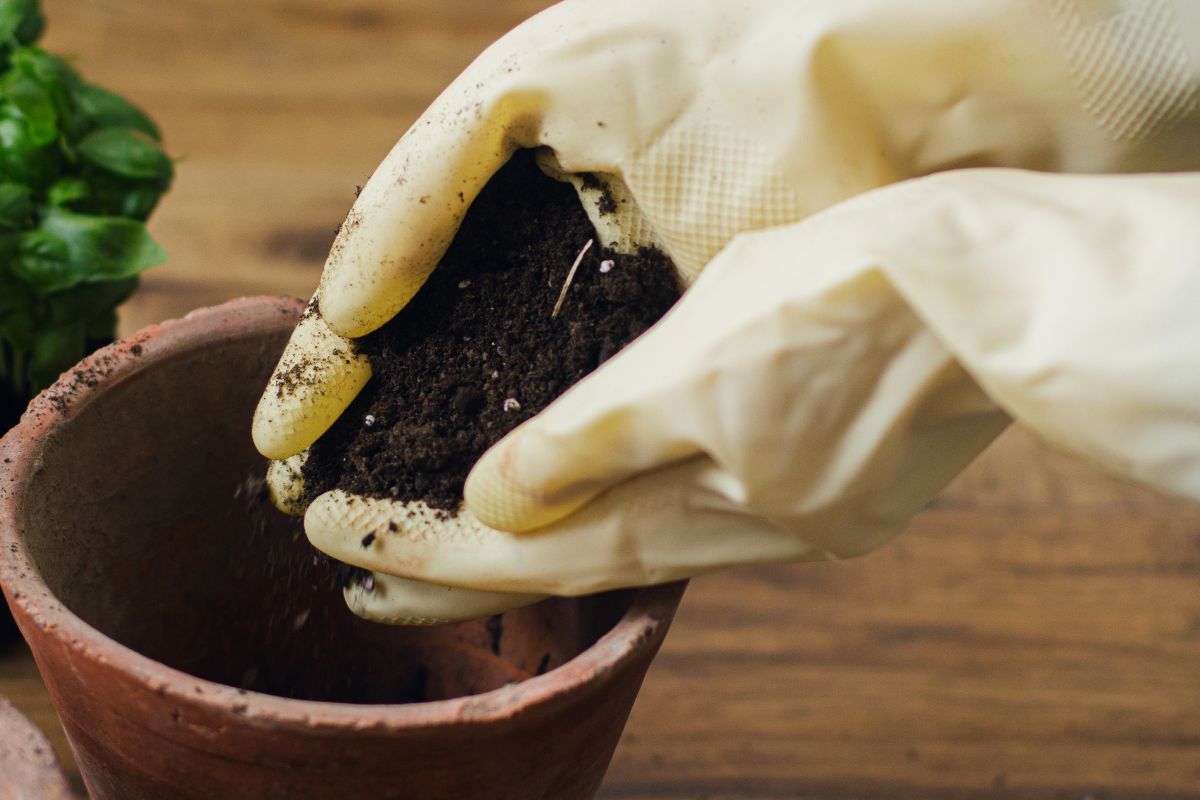
Once you have decided on the pot and the material that it will be made of, it’s now time to prep it. Get rid of all the old soil from the pot and give it a good wash to make sure it’s clean.
Place big rocks or pebbles at the bottom part of the pot first to help manage water retention and avoid root rot. Put a quality potting mix and spread it out evenly. In the middle of the soil, dig a little hole.
I recommend dropping the Miracle-Gro Quick Start Planting Tablets (buy here) into the hole to jump-start root growth in the first 30 days. The number of tablets to use will depend on the diameter of your pot. The hole you made is where the plant will go.
Step 3 – Remove Plants From the Aerogarden
With the container already cleaned and prepped, we are now ready to remove the plants from the AeroGarden. Removing mature plants from the grow sponge can be more challenging than removing younger ones. A bit more care and time is needed to avoid damaging the roots.
If you over-planted and the roots are all tangled, be patient. Slowly wiggle the grow sponge from side to side as you pull it up. Rushing can hurt the plant.
AeroGarden roots can be very long. If they’re too long for the new pot, you can trim them with scissors or a knife. Just be careful not to trim too much, or the plant might struggle to stay in place.
Moving pods into soil is a big step for plant health and growth. With the right care, your plant will adjust to its new home and continue to thrive.
Step 4 – What to Do With Grow Baskets
You might wonder what happens to the grow baskets when pods are transplanted. Some people keep it on, and others take it off.
Leaving the grow basket on will protect your plant’s roots from damage as it will remain intact. If you decide to remove it, you’ll need a good pair of clean pruning shears or scissors. Be very careful not to hurt the plant or yourself. To free the roots, make small cuts where necessary. This process can be slow, especially for older plants with well-developed roots.
Step 5 – Put AeroGarden Plants in Pots
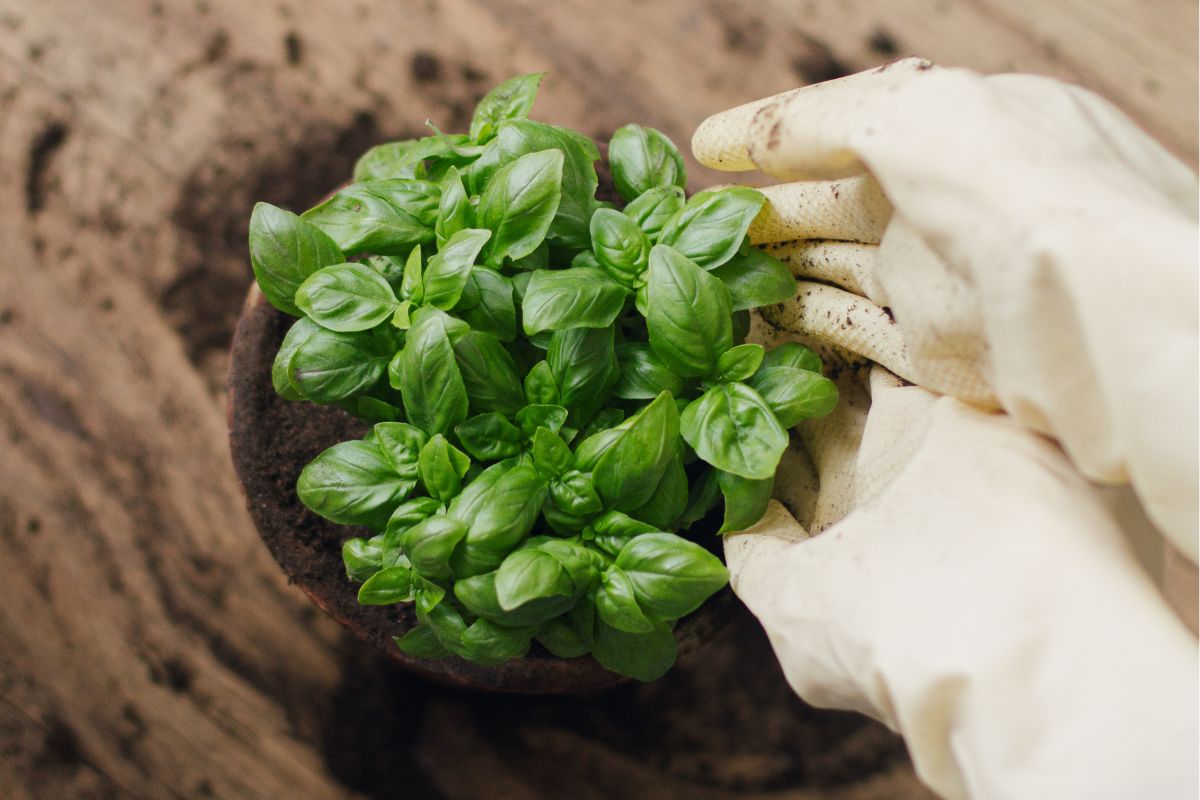
You’re now ready to give your AeroGarden plants a new home in soil. Let’s make this transition smooth and easy.
Grab your prepared containers. It’s time to introduce your plants to their new digs. Handle your green buddies with care as you don’t want to hurt those delicate roots.
Place your plant so the top of the grow sponge sits level with the soil surface. Spread those roots out in the soil. Add more soil around your plant. Pack it down gently over the roots but don’t go overboard. Roots need to breathe too.
Step 6 – Place the Plants in Light
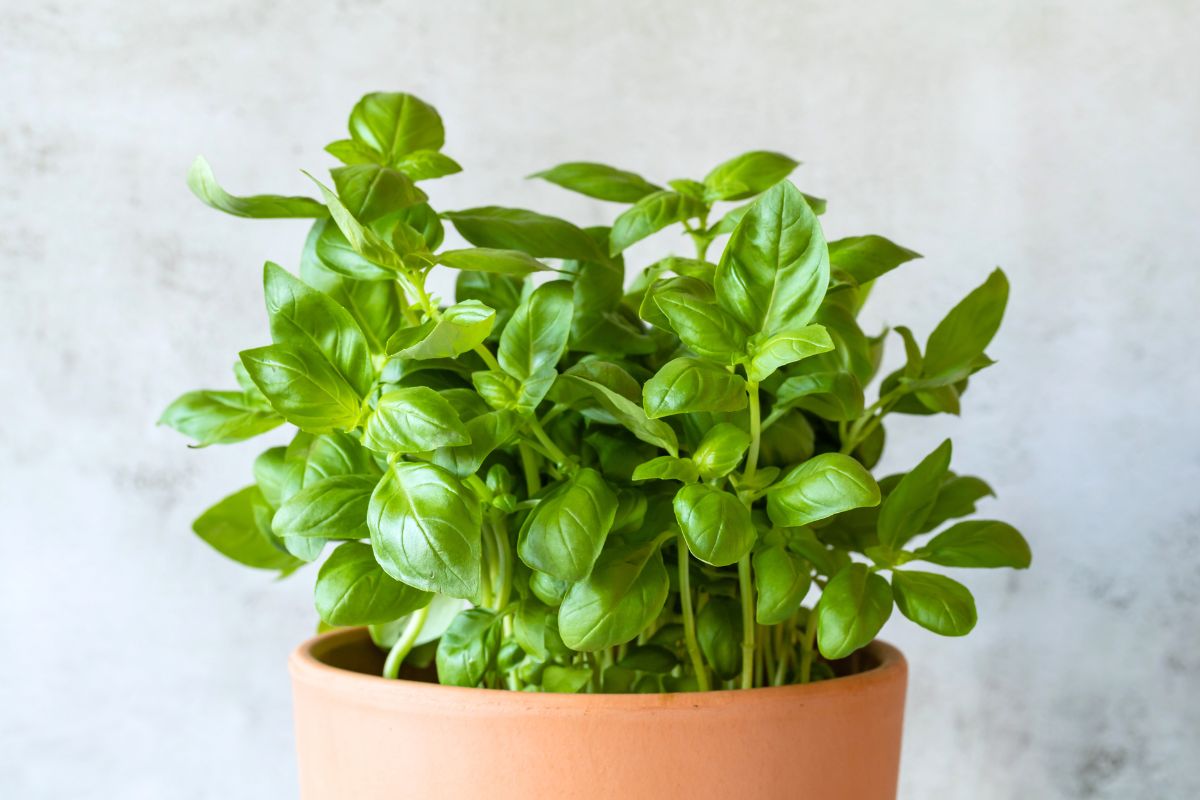
Place the transplanted AeroGarden plants in a well-lit area with plenty of bright, indirect light. Keep them away from direct sunlight as that will be too harsh for them after the big transition.
You should check on your plants every day to ensure they are getting enough light. If they aren’t, move them closer to the light source.
Step 7 – Keep a Watering Schedule
Transitioning your AeroGarden plants to soil can be tricky. I’ve learned that keeping the soil moist is key in those first few days. Your plants are used to having water on tap, so they’ll need extra care at first.
Here’s how I maintain a watering schedule for newly transplanted plants:
- Water the plant when the top layer of the soil feels dry
- Check on it daily to see how thirsty it is
- Keep an eye out for wilting – that’s a sign that it needs more water
The soil temperature and plant type play a big role too. Some plants are needier than others! Don’t worry if you’re dealing with unfed plants. They’ll perk up once they get settled in their new soil beds. Just be patient and attentive.
Overwatering can be just as bad as underwatering. You’ll get the hang of it with practice.
Step 8 – Hardening the Plants
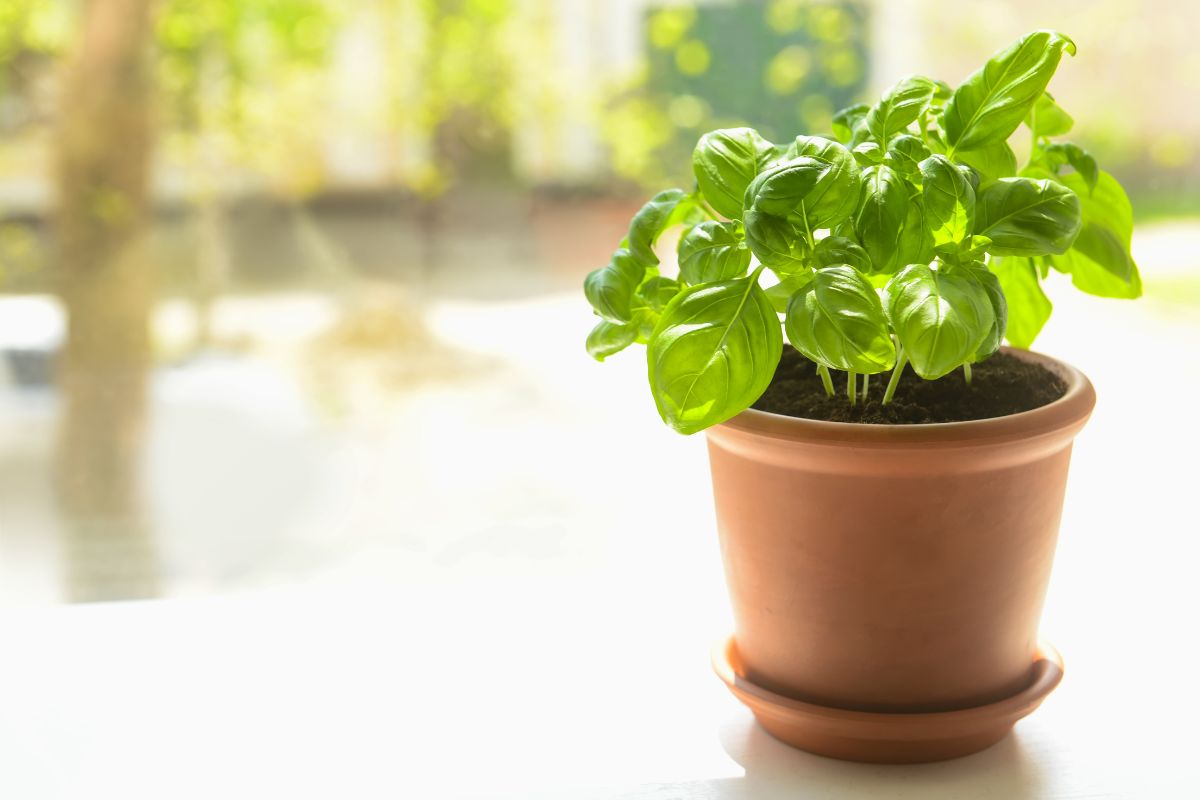
Hardening is like a boot camp for your plants. It gets them ready for life outside their cozy AeroGarden home. Think of it as prepping your plants for the “real world” of outdoor living.
Here’s how you can toughen up your green buddies:
- Start With Some Sunbathing – Let your plants catch some rays for a few hours each day.
- Give Them a Taste of Fresh Air – Expose them to outdoor temps for short periods.
- Warm Them Up – Gradually increase their time in warmer conditions.
Hardening isn’t about shocking your plants. You’re not trying to recreate extreme weather conditions here. It’s all about baby steps.
I’ve found that taking about a week for this process works well. Start with an hour outside and slowly increase the time each day.
Transplanting AeroGarden Plants to Soil Final Thoughts
Moving your AeroGarden plants to soil can be a great way to help them grow. It gives them a more natural home that supports stronger and larger growth. Soil provides room for roots to spread out, which is really good for big plants that might feel too tight in the AeroGarden. Another bonus is that soil is less likely to get algae, so you won’t have to clean as often.
When you’re ready to transplant, make sure that you have your pot and soil selection ready. Don’t forget to scout out the perfect location beforehand as well.
Be gentle with your AeroGarden plants during the transition. Hardening your plant will help it adjust to its new environment gradually. By following these steps, you’re setting your plant babies off to healthy and thriving growth.
Transplanting AeroGarden Plants to Soil FAQs
1. How to Transplant Tomato Plants From AeroGarden?
When you move tomatoes from your AeroGarden to the soil, you can plant them deep. Tomatoes are special. They’ll grow roots all along their stem if they touch moist soil.
2. Can I Transfer Plants From AeroGarden to Soil?
Absolutely! The best moment to transfer plants from the AeroGarden to the soil is right after the first true leaves appear. These aren’t the initial sprouts but the second set of leaves that look more like the adult plant. For the best results, use AeroGarden’s Miracle-Gro Potting Mix (buy here) to give your plants the nutrients they need to thrive in their new environment.
For more on AeroGardens, check out these articles:





